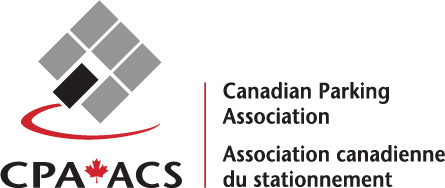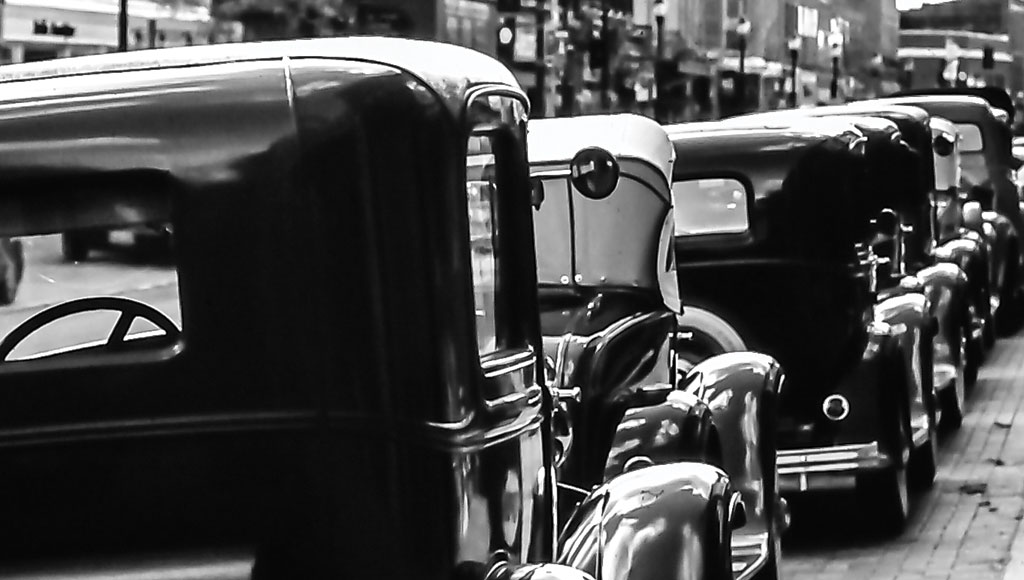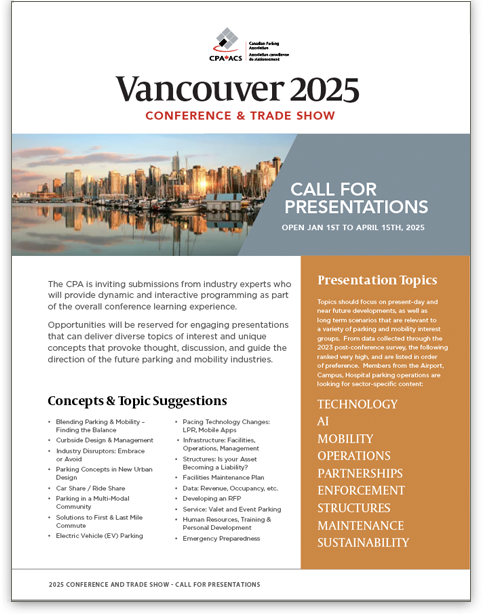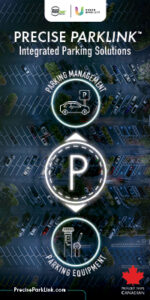The Past, Present, and Future of The Parking
By Milirsan Pugalendiran, B.Eng. Civil Engineering, Lassonde School of Engineering – York University
Tom Arnold Scholarship in Parking Industry Advancement at York University 2018 Recipient
With the rise of mass-manufactured automobiles, a new industry was created. The parking industry was born with rise of affordable automobiles and has changed significantly since Henry Ford’s invention of the assembly line in 19081. The parking industry started off with simple parking lot designs and has now evolved to parking lots capable of self-parking. We now face even greater challenges with the rise of Autonomous vehicles which calls for “Smarter” parking lots. This article looks at how the Parking Industry has changed over the years and what the future holds for parking.
Past
The first automobile can be as early found in the late 1600’s but the parking industry began with the rise of the mass-produced vehicle, the “Model T”1. Something that was only for the wealthy had now become affordable for the average person.
People needed a space to park their cars, which prompted the creation of parking lots. With 23 million cars in America, parking became a serious issue and city officials turned to engineers to invent a solution which resulted in the first parking lots4.
At the beginning, parking lots were designed with diagonal bays to accommodate the fairly large automobiles and to allow for ease of parking2. Early automobiles were also not as weather resistant compared to the automobiles of today3 and so had to be designed with weather protection in mind. High-rise, fully enclosed parking garages were built to accommodate the larger volumes and to protect these vehicles from the elements. Innovations such as the “D’Humy ramp system”, which created split-level floors to maximize spaces, were incorporated into the high-rise buildings3.
Vehicles were parked by professional valets who had experience using the mechanical ramp system. As the need for parking grew, city officials and entrepreneurs began to view parking spaces as a possible source of revenue. With investors interested in the industry parking lots we saw a steady increase in their construction. There were also innovations in building materials and automobile technology and this created a boom in parking lot construction in the 1950’s4.
Automobiles also became smaller and weather resistant and this allowed for smaller, wall-less parking lots. Parking lots had now simply become a place for temporary vehicle storage. Self-parking also became more popular with the installation of internal ramps. This gave birth to the modern parking facilities which closely resemble the ones we often see today. Parking had started off as a luxury but soon turned into a necessity for cities.
Present
After the construction boom, the design of parking lots had not changed much in the next 50 years. The “Information Age”, however, allowed us to incorporate technological advancements into parking. Automated parking garages were introduced, and were soon dubbed with the name “Smart Parking”.
Smart/Automated parking lots have been designed to provide a range of services to make parking easier. These systems may help drivers find a vacant spot and/or alert drivers of the presence or absence of a vehicle5. Smart Parking had become a well-known and currently growing industry with many businesses specializing in “Smart Parking” lot construction.
We also saw a cultural shift in transportation. Governments were encouraging people to use public transit, bicycles, and/or carpooling as means to help reduce greenhouse emission and as a way to improve our health. This is exemplified in cities such as San Francisco where transportation officials are trying to decrease the number of parking lots6.
Public space improvements such as bike lanes and green spaces have discouraged the construction of parking lots. There have also been studies into dynamic pricing for spaces to limit parking6. For instance, in Philadelphia, there has been a 7% reduction of parking from 2010 to 20156 and in cities like Zurich, city officials have placed a cap on the number of allowed parking spaces6. The demand for public parking is on a downward trend and this applies to all the major cities of the world.
Future
Autonomous vehicles (AVs) are not so much the future as they are already here. Many consider this to the biggest challenge for the parking industry. The consequences and/or benefits are still not certain yet, but AVs have enormous potential to re-shape the parking industry.
AVs can potentially drive themselves thus reducing the need for human drivers. These vehicles, however, still require parking but the space needed can be decreased drastically and the distance between parking lots to the final destination can be increased.
AVs have sparked numerous creative research projects. Most recently, civil engineering graduate students from the University of Toronto have designed a “solid grid” like parking lot where AVs communicate with each other and move out of the way when another AV is parking7. This can greatly reduce the space required for parking, and, depending on the grid configuration, these parking lots can accommodate 62%-87% more cars7.
AVs are allowing engineers to innovate solutions that never could have been possible previous to this revolution. Trial fully-automated parking lots are being tested all over the world. Cities such as Boulder and Somerville are partnering with businesses such as Audi to create these efficient parking lots8. In order for the parking industry to accommodate the future, new technology need to be explored. The parking industry is already looking towards the future and it won’t be long until we see the parking lots of the future.
Conclusion
While there are challenges in the parking industry, currently and in the coming years, there is no doubt that this will lead to more efficient and creative solutions. The parking industry has survived for over 100 years and no obstacle will be able to completely eradicate it. Through looking at the history of parking industry it may provide insight on how we can tackle the problems we face today and in the future.
- https://www.history.com/topics/model-t
- http://www.parkingisrael.co.il/the-history-of-parking-lots/
- http://flexpostinc.com/2017/04/10/parking-garages/
- https://www.npr.org/templates/story/story.php?storyId=120545290
- https://www.pcmag.com/encyclopedia/term/65086/smart-parking
- https://www.theguardian.com/cities/2016/sep/27/cities-eliminating-car-parks-parking
- https://www.utoronto.ca/news/how-self-driving-cars-could-shrink-parking-lots-u-t- research
- https://www.forbes.com/sites/pikeresearch/2017/01/26/smart- parking/#33d1e25762f6






